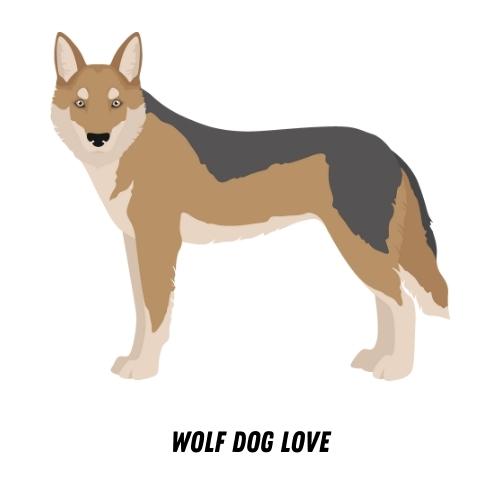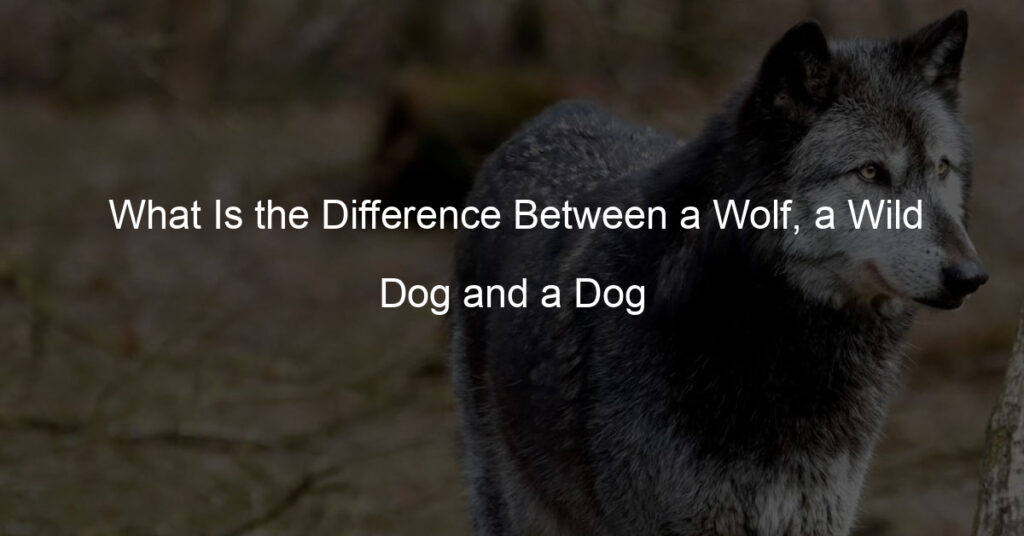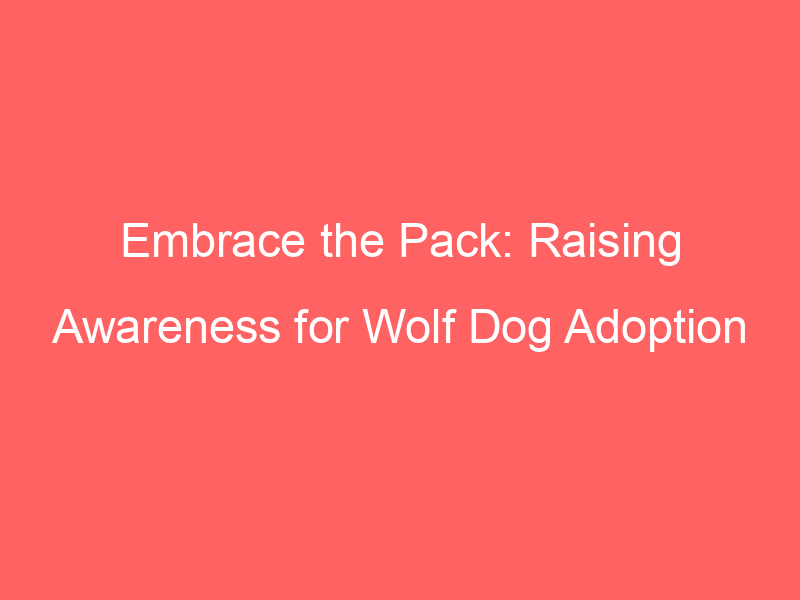Have you ever seen a wild dog or wolf and wondered what the difference is between them and your friendly neighborhood pup? While they may look similar, there are quite a few differences between these Canis lupus subspecies. Keep reading to learn more about the fascinating world of dogs!
Is a wolf considered a wild dog?
Wolves are often referred to as wild dogs, but the truth is that not all wild dogs can be classified as wolves. Wolves are a large subspecies of canine, and they come from the same ancestor as other wild dogs.
They are generally much bigger than other wild dog species, with some individuals growing up to five times larger than typical members of the wild dog species. Along with their sheer size, wolves possess incredibly keen senses of hearing, sight, and smell,l which give them an edge in survival over other animals in their environment.
What’s more, their social structure and behavior differ greatly from most other animals in the world, further establishing wolves as one of the most unique creatures in the animal kingdom.
Which is stronger wild dog or wolf?
It is commonly believed that wild dogs are weaker than wolves, however, there is more to the comparison than meets the eye. Wild dogs are pack hunters who rely on outthinking their prey and overwhelming it with sheer numbers.
While a lone wolf typically has the upper hand against a wild dog in a one-on-one confrontation, the dog’s pack dynamics allow them to exploit weaknesses in larger animals such as elk and moose.
Therefore, when comparing wild dogs and wolves, it depends on the situation – while an individual wolf may be stronger, a pack of wild dogs can be an intimidating force to reckon with.
Is a wolf-dog a wolf or a dog?
Deciding whether a wolf-dog is considered a wolf or a dog can be tricky, as it depends on the amount of ancestral background of each animal. If a wolf-dog has a more closely related lineage to wolves, then it would be called a “wolf”; however, if the example haa s more closely related lineage to dogs, then it will be considered closer to being a “dog”.
It’s all down to an analysis of their DNA and their physical features and behavioral patterns; even then there can still be disagreement as to what species any given wolf-dog is closest to. All that aside though, these majestic creatures make for fascinating pets if you can commit the time, energy, and money it takes to properly care for them!
What are the physical differences between wolves and dogs?
Perhaps the most notable physical difference between wolves and dogs is size. Wolves can be up to twice as large as full-grown dogs, although their smaller sizes vary depending on the breed. Wolves are also typically leaner and often have longer noses and larger feet than a dog of equal size.
The fur on wolves can either be short or long, dense or sparse, but it’s usually thicker than a domesticated dog’s coat due to the harsher climates they come from. In terms of color and patterns, wolves run the spectrum with everything from amber, black, grey, and white being seen in the wild.
While domesticated dogs have been bred to have an even greater variety of colors and patterns. You’ll also generally find wolf tails held straight while they’re running or walking while domestic dogs typically keep theirs tucked closer by their side when not excitedly wagging them behind them.
All in all, it’s easy to tell why many people use “wolf-like” adjectively – because with their imposing stature and distinct features there aren’t another species that quite looks like them!
What makes a dog a wolf?
Even though they’ve been domesticated and bred as pets, dogs still share many of the same characteristics as wolves, at least on a genetic level. Their similarity can be seen in body shape, behavior, and even some of their physical features like claws or fur color.
Although dogs can come in all shapes and sizes, some breeds still resemble wolves quite closely, with long snouts and large heads indicative of their shared ancestry. It’s also not just about looks; the way dogs howl, bark, and interact with family members has a lot in common with wolf behavior.
All these features combined create an animal that shows deep-rooted ties to its origins in the wild. It’s incredible to see that after all these years of domestication, dogs are still so close to their wolf relatives.
Do wild dogs still exist?
Wild dogs have had a complicated history in the wild since their domestication by humans more than 10,000 years ago. While some types of wild dogs, including African Wild Dogs, still exist in parts of Africa, South America, and Asia, they are considered to be critically endangered in some areas.
Without conservation efforts, they are at risk of disappearing forever. It is estimated that just 0.1 percent of the wild dog population remains today. This means that even though these largely social predators still exist in many places across the globe, numbers remain small and they are highly vulnerable to threats from both humans and their environment.
In Conclusion
We have explored the differences between wolves, wild dogs, and domestic dogs in some detail: wolves evolved more distinct physical characteristics, wolf pack behavior typically results in better protection of offspring compared to wild dog families and packs, and domestic dogs have much more varied characteristics.
While each species may look similar, they are all very unique animals reflecting the diversity of nature. As we continue to learn more about wolves, wild dogs, and domestic dogs alike, the importance of protecting their habitats will become increasingly apparent.
It is our responsibility as stewards of the environment to ensure that these animals can thrive without disruption from human activity. We must work together to safeguard their natural homes and protect these three remarkable species for generations to come.








